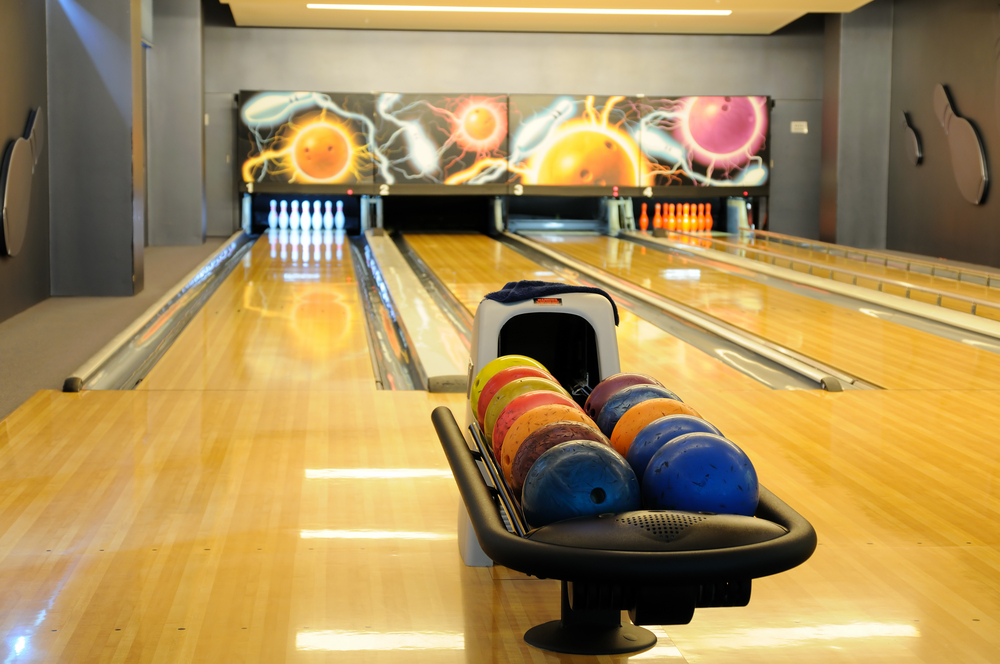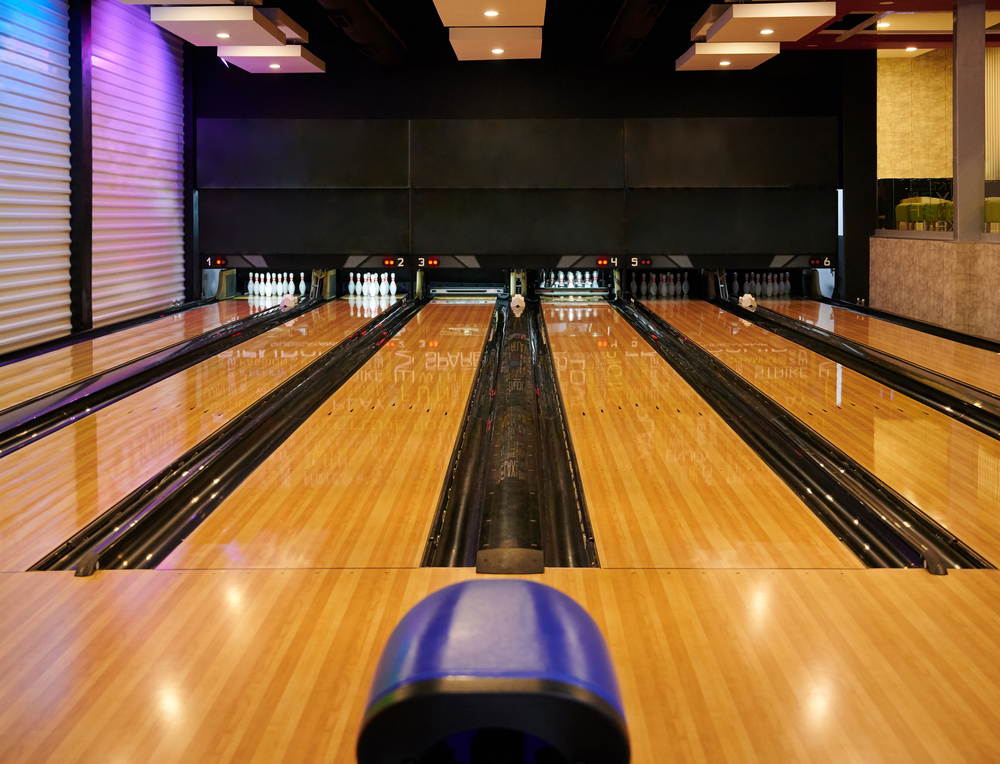
It's easy to walk into a bowling alley, bowl your game, and head home without taking in everything that makes a bowling alley work. However, everything from the automatic scoring system to the pinsetters is fascinating when you think about it.
Let's look at how bowling alleys work so that the next time you bowl, you'll be able to appreciate all that goes on behind the scenes fully!
Contents
How Do Bowling Alleys Work?
A bowling alley is a complex network of interconnected parts that operate in tandem. It's all activated when your ball hits a particular spot on the lane.
Keep reading to learn how a bowling alley works step by step:
- You roll the ball down a wooden or synthetic lane.
- Before it gets to the pins, the ball sets off a sensor hooked up to the pinsetter, which creates a chain reaction.
- Whether your ball knocks down some pins or goes into the gutter, the gate comes down in front of any remaining pins to prevent you from knocking any pins down with a second ball.
- A camera takes a picture of how many pins remain.
- The scoring system records the number and calculates the result according to preset bowling rules.
- The pinsetter then picks up the remaining pins and sweeps away the pins you knocked down in the pit where both the fallen ball and pins are collected.
- The pins you missed the first time are placed onto the lane for your next throw.
- Your ball is returned to you via the ball return - the ball goes up a ramp and then rides down a track system built under the bowling lane. Gravity gives the ball enough force to make it back to you.
- The pins you already knocked down eventually go through a pin elevator wheel, which stands them back up.
- The pins are then sent on another conveyor belt to be redistributed, placed into the pin table, and lowered for the next frame.
Note: Some bowling alleys may operate a bit differently, but this is a general overview of how most work.
This can be difficult to visualize - here's a video to help things make perfect sense.
Bowling Alley Equipment
Knowing about the equipment associated with bowling alleys is essential to understanding how they work. Here's a quick rundown of the equipment that keeps a bowling alley running smoothly:
- Pinsetter - A pinsetter, or pin spotter, is a machine used to set up bowling pins, on a pin deck, for each roll. The first automatic pinsetter was created in 1956 by Brunswick. Today's pinsetter is not too different from the original Brunswick version.
- Ball return- Each lane in a bowling alley has a dedicated ball return, which returns the bowling ball after each roll.
- Scoreboard - A scoreboard keeps track of the score for each player in a game.
- Bowling shoes - Specialized shoes that bowlers either rent or bring to the bowling alley; wearing outside shoes on the approach can result in slips and falls.
- Bowling balls - Balls designed for use in bowling alleys are called house balls. They come in a variety of sizes, weights, and colors to suit every bowler's personal style.

How Bowling Alleys Keep Score
All bowling alleys in operation today have some version of an automatic scoring system. This system uses sensors to track the ball as it goes down the lane and knocks over the pins.
The sensors then send a signal to the scoring system, which automatically calculates and displays the score for that turn.
Some more advanced scoring systems can even keep track of statistics for individual bowlers. This information can be used to help bowlers improve their game or just to keep track of their progress over time.
The automatic scoring system is connected to the pinsetter, which is the machine that sets up the pins for each turn. This ensures that the pins are always correctly aligned and that the game can proceed smoothly.
How Bowling Alley Lanes Are Oiled
Most bowling alleys use a machine to oil their lanes. This machine applies a very thin layer of oil to the lane, which makes it easier for bowling balls to travel down the lane. Oil also helps to preserve the lanes and prevent premature wear and tear from the impact of bowling balls.
Oiling is typically done before the bowling alley opens for business.
The amount of oil applied depends on the oil used and the lane's conditions. If the lanes are dry, more oil may be needed to keep the balls from slowing down prematurely or getting stuck.
But it's not that straightforward - a bowling center also uses oil patterns to tailor bowlers' experiences. These patterns are created by a specialized machine that oils the lanes and can be customized for specific bowler types in different skill brackets.
A standard oil pattern used for recreational bowling is known as the "house shot. It's a very forgiving oil pattern that's harder to mess up on than a pattern like the Highway to Hell.
Recreational bowling patterns are super forgiving and usually preferred by casual bowlers. Challenge patterns are for avid bowlers, as they are a bit more difficult to maneuver.
And sport patterns are the toughest of the tough, reserved for pros and tournament play because the oil thins in various places, allowing any spinning ball to hit pins at an angle.

How Bowling Alleys Keep Bowlers Safe
One of the most important aspects of any bowling alley is ensuring bowlers are safe. This is why gutters line both sides of the lane. These gutters help to keep the bowling balls from flying off the lane and hitting someone.
Another safety feature of bowling alleys is the ball return. This system ensures that bowlers don't have to go down the lane to retrieve their balls.
Instead, the balls are automatically returned to the bowler after each turn.
Bowling alley staff also ensure that all bowlers wear specialized bowling shoes. Wearing outside shoes on the approach can result in slips and falls, so bowling alleys typically require that bowlers either rent shoes or bring their own.
In addition to these measures, most bowling alleys publish or post rules that help to keep everyone safe. For example, many bowling alleys prohibit running on the approach and ask bowlers not to reach into the ball return machine.
How Bowling Alleys Make Bowlers Stay Longer
To maximize revenue, bowling alley management strives to ensure bowlers stay for a long time and come back often. One way they do this is by offering food and drink options.
Most bowling alleys have a snack bar or concession stand that sells snacks and drinks. And some even have full-service restaurants. Another way bowling alleys keep bowlers around is by offering entertainment options beyond just bowling.
Many bowling alleys have pool tables, video games, and other activities that bowlers can enjoy. And some even host special events like live music or comedy shows.
Finally, many bowling alleys offer loyalty programs that give bowlers discounts and rewards for returning. For example, some alleys offer discounts for booking a lane online or signing up for a membership program.

Related Articles
So, there you have it - everything you need to know about how bowling alleys work inside and out. We hope that you found this article to be helpful and that we've satisfied your curiosity.
The next time you visit a bowling alley, you'll have a better understanding of how it all works. We wish you the best in your bowling endeavors now and in the future.
Kira Byrd, a Certified Fraud Examiner, holds a B.S. in Accounting from the University of Alabama at Birmingham. With a passion for bowling from her childhood, Kira has poured her expertise and personal experiences into creating and nurturing Bowling For Beginners. Kira's mission is to meet new bowlers where they are and guide them toward consistently achieving higher scores. With a focus on skill development and strategic techniques, she empowers readers to take control of their game and unlock their true potential.
Bowling For Beginners embodies strict editorial integrity, ensuring reliable and unbiased information. Kira's commitment to delivering valuable insights and practical strategies is reflected in every article. Here's an explanation of our editorial policy and how we get money.





